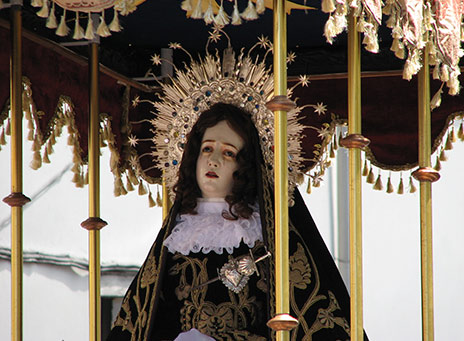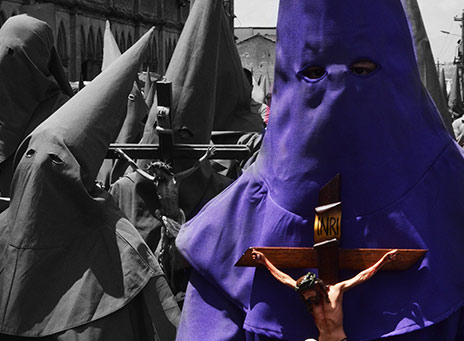Holy Week, or Semana Santa, refers to the week leading up to Easter Sunday, the day that Christians celebrate Jesus’ resurrection from the grave. It comes at the end of the 40-day long period of Lent, known in Spanish as Cuaresma, which is a time of reflection, sobriety, and sometimes even fasting for Christians.
Semana Santa falls on different dates each year, according to the lunar calendar: In 325 AD, the Council of Nicaea decided that Easter should be celebrated on the Sunday after the first full moon that follows the spring equinox. When Easter, and other Catholic celebrations like Christmas, arrived to the Andes, reference points of lunar cycles and equinoxes meant that the holidays coincided with pre-Colombian harvest festivals. Pawkar Raymi, the Andean festival that coincides with the Spring Equinox, is the festival of blossoming.

Procession of Jesús del Gran Poder
One of the most striking traditions of Semana Santa in Quito is the Procession of Jesús del Gran Poder (Jesus Almighty). The origins of this practice date back to medieval times, and the procession has only survived as a tradition in a few other places in the world.
Good Friday (Viernes Santo) recognizes the day that Jesus was crucified, and the Procession of Jesús de Gran Poder commemorates that on a large scale. Each year, thousands of devoted Catholics walk a 7-kilometer route around Quito’s Historic Center in order to represent Christ’s atonement for their sins.
 The men who participate in the procession are referred to as cucuruchos, while the women are called verónicas. The word cucurucho comes from a Latin word that refers to the distinctive cone-like shape of the participant’s hats. The term veronica refers to Saint Veronica, the woman who attended to Christ at Golgatha. Veronica wiped Christ’s brow while he was on his way to be crucified, and it is said that the face of Christ was then permanently imprinted on the cloth.
The men who participate in the procession are referred to as cucuruchos, while the women are called verónicas. The word cucurucho comes from a Latin word that refers to the distinctive cone-like shape of the participant’s hats. The term veronica refers to Saint Veronica, the woman who attended to Christ at Golgatha. Veronica wiped Christ’s brow while he was on his way to be crucified, and it is said that the face of Christ was then permanently imprinted on the cloth.
The participants, who come from Catholic parishes wear deep purple robes with tall cone-shaped hats. Many walk barefoot. Others tie thick wooden beams or branches of a cactus to their backs in the shape of a cross. Some walk with chains locked to their ankles. All of these rituals are meant to recreate, rather than simply symbolize, the suffering and sacrifice of Jesus on the cross. Some people even walk through the procession with bare backs and flagellate themselves with whips or stinging nettles continuously.

The purple color of the robes represents penitence—It symbolizes the cucurucho’s repentance of their sins, while the tall cone hats represent humility. Indeed, some say that originally the people who walked in the procession were convicts from the city’s prisons. The procession passes through the nine stations of the cross: These refer to specific moments of Christ’s passion that are recognized through different songs and prayers. The stations of the cross include follow Christ from his condemnation to his death and his placement in the tomb: a somber reflection on the nature of sin and atonement.
It’s advisable to arrive early to be able to pick a good spot among the crowd, or to choose a place with a view. From the platform of the Basílica Church it’s often possible to get a good look at the procession without getting too lost in the masses.
